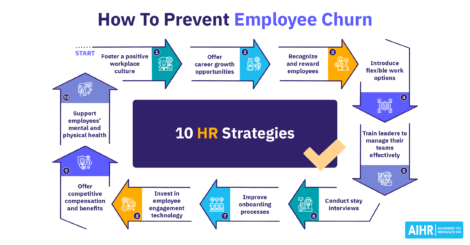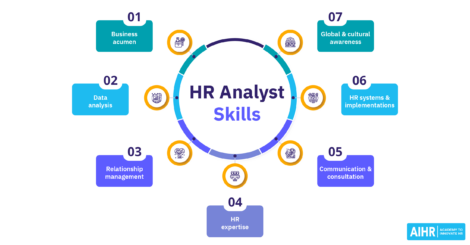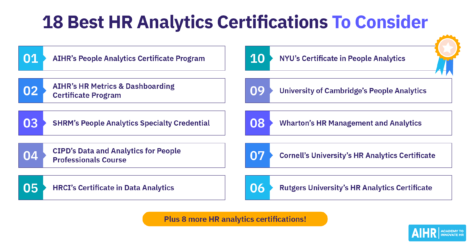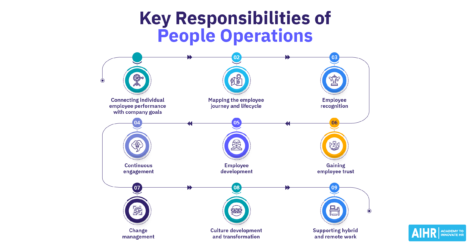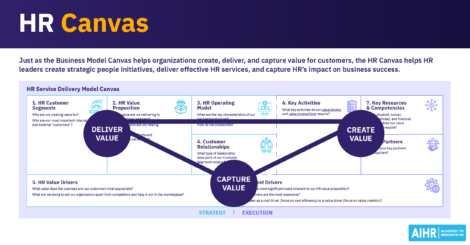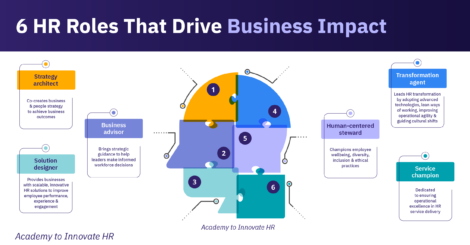10 Top Reasons for Employee Turnover & How To Prevent It
According to a Work Institute report, employee turnover costs U.S. companies nearly $900 billion a year. What can HR professionals do to make excessive turnover a problem of the past?

There are as many reasons for employee turnover as there are people who leave their jobs. Some may get an alluring offer from the competition, while others become parents or are fed up with their jobs, managers, or co-workers.
This article explores some of the most common reasons for employee turnover and ways to prevent it. Let’s get started!
Contents
What is employee turnover?
Why you need to understand the reasons for employee turnover
Top reasons for employee turnover
Interaction among predictors of employee turnover
How to reduce employee turnover
FAQ
What is employee turnover?
Employee turnover refers to the rate at which employees leave a company within a specific time frame, often measured annually. There are several types of employee turnover:
- Voluntary turnover: An employee chooses to leave a company, like resigning for a new job or personal reasons.
- Involuntary turnover: An employer decides to part ways with an employee, often due to performance issues or layoffs.
- Functional turnover: This is when the departure of an employee is seen as positive for the company, like when a low performer leaves.
- Dysfunctional turnover: This refers to the loss of high-performing or valuable employees, which negatively impacts the organization.
- Employee attrition: Often used interchangeably with turnover, employee attrition is a gradual reduction in staff, usually through natural causes like retirements or resignations, without actively replacing those employees.
Turnover can be measured for the entire organization and by department, team, demographic groups, and other subcategories within the company.
To calculate their employee turnover rate easily, organizations usually divide the total number of people who leave during a specific period by the average number of employees at the company during that same period. For example, if an organization with 1,000 employees encounters 100 departures over a year, its turnover rate is 10%.
Why you need to understand the reasons for employee turnover
There are multiple reasons why it’s essential for businesses to understand why their employees leave, including:
- Preventing unwanted turnover: If you understand why employees leave, you can do something about it. For example, data from exit interviews shows that people leave mainly because their compensation isn’t in line with the rest of the market. You can then see how you can start improving your compensation packages and eliminate it as a cause for unwanted turnover.
- Cost saving: The average cost of replacing an employee is between one and two times their annual salary. Employee turnover often leads to knowledge and productivity loss and a drop in employee engagement and morale, all of which translate into extra monetary costs as well.
- Building a stable workforce: A stable workforce positively impacts morale, while excessive turnover often leads to an increased workload and stress for those left behind. Less turnover also contributes to sustainable, long-term business growth through continuity in productivity, team dynamics, and institutional knowledge.
- Implementing targeted employee retention strategies. As mentioned above, when you know why people leave, you can implement targeted strategies to improve retention. For example, data from your new hire survey shows people find their onboarding doesn’t prepare them for their role and focuses too much on administrative tasks. Modifying your employee onboarding process can tackle this issue and prevent new hire turnover.
Top reasons for employee turnover
A comprehensive meta-analysis of research on employee turnover, drawing from data on over 60,000 employees, has revealed key factors that consistently predict why people leave their jobs. These insights highlight the top reasons behind employee turnover and clarify what drives employees to move on.
Some of these factors are easy to track, while others are harder to measure or are more abstract in nature.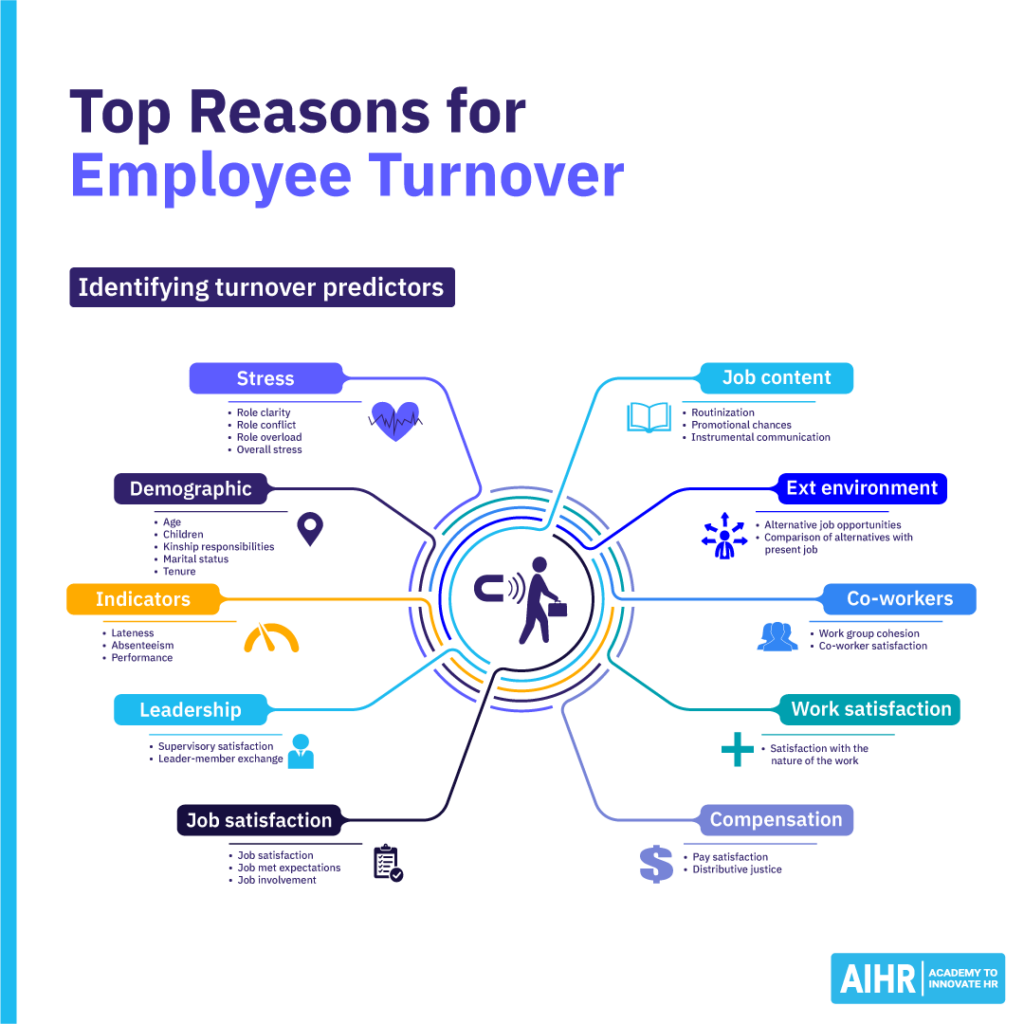
Let’s take a closer look at the top drivers of employee turnover.
1. Stress
Stress causes people to leave their jobs. Highly stressful work environments typically have higher employee turnover rates and more cases of employee burnout than low-stress environments.
Examples of things that can cause stress include:
- Role clarity: Clearly defined roles and responsibilities give people more support and are less likely to cause stress.
- Role conflict: A role conflict occurs when an employee is expected to fulfill the duties of two contradictory positions.
- Role overload: Employees need a number of resources (e.g., time, autonomy, budget, coaching, career opportunities, etc.) to do their jobs well.
When employees don’t have sufficient resources and a taxing role, this leads to role overload and stress and often prompts them to leave. Excessive, unmanageable workloads are one of the most common causes of stress. If the sheer volume of work or tight deadlines are simply outside people’s capabilities, this will likely become a source of pressure. - Overall stress: To build a buffer against work-related stress, people need to enjoy a good quality of life outside their work. For instance, a lack of work-life balance will only increase their stress levels.
How to measure stress
Stress is often subjective and, therefore, not always easy to measure. One way to do so, though, is by using employee surveys such as:
Other elements, like your organization’s absenteeism rate and the number of sick days taken, can also indicate that your employees experience a lot of stress.
2. Demographic
Demographic variables are a strong predictor of people’s turnover intentions and are easy to measure. Think of the following examples:
- Age: Age is typically negatively associated with people’s intention to leave their employer. This means that younger people leave their jobs more frequently than older people.
- Children: People with children are less likely to switch jobs. This is probably due to the extra responsibilities of being a parent.
- Kinship responsibilities: The level of kinship responsibilities, the obligations or duties individuals have towards their family members or close relatives, influences their willingness to change jobs. This is likely because having more responsibilities discourages risk-taking.
- Marital status: People who are married are less likely to switch jobs than people who are not married. This is probably due to the extra responsibilities of marriage in line with the previous two factors.
- Tenure: The single most significant indicator of turnover is employee tenure. For example, people usually are more likely to leave in their fourth or fifth year than in their first year. Most people don’t want to be seen as job-hoppers, so they tend to work for at least a couple of years for the same company. On the other hand, when people work for a company for a very long time, they are less likely to ever work for another organization.
How to measure demographic variables
Demographic information usually is easily accessible through an organization’s Human Resources Information System (HRIS).
3. Leadership
The age-old adagio “people leave their bosses, not their jobs” is confirmed by research and rings truer today than ever. Gallup data shows that the manager determines 70% of team engagement variance. The following elements matter in that regard:
- Supervisory satisfaction: Employees who are happy with their supervisors will stay with the organization for a longer period.
- Leader-member exchange (LMX): The LMX theory focuses on whether or not the relationship with the leader is a two-way relationship.
When managers see their team members as individuals and recognize their contributions to the team, people will appreciate their managers much more than when they feel like they are just one of the many.
How to measure leadership
Leadership variables are difficult to measure. However, when you have large teams, you can use them as a control variable in your analysis. For example, if one team loses employees much more rapidly than others, this might indicate something about the team manager’s leadership style.
Of course, a closer analysis is still needed to justify this conclusion and to determine what exactly needs to be improved; are we dealing with poor management and leadership practices, a lack of transparent communication, or toxic leadership, for instance?
4. Job satisfaction
People’s satisfaction with their jobs is another important turnover indicator. Consider the following factors in that regard:
- Job satisfaction: This is a much-used measure in surveys to gauge how satisfied people are with their jobs.
- Job met expectations: Whether or not the job meets people’s expectations from before they started is an essential element of their happiness with that job. For example, if people expect to have more responsibilities or autonomy than they actually have, they are likely to leave. If there is a significant gap between their expectations and reality, people may leave the organization within just a couple of months. Companies can use methods like realistic job preview to prevent this from happening.
- Job involvement: Job involvement refers to how engaged people are in their work. When their role aligns with their interests and they feel fully engaged, they are more likely to remain with the organization.
5. Work satisfaction
Work satisfaction is a factor very similar to job satisfaction. There is a subtle difference. Job satisfaction generally refers to the overall contentment an employee feels about their job, including factors like pay, work conditions, and relationships with co-workers. Work satisfaction specifically focuses on satisfaction derived from the tasks and responsibilities of the job itself—how fulfilling or engaging the work is and whether the employee feels motivated by the work they do.
In other words, work satisfaction zooms in more directly on the nature of the work itself.
How to measure job and work satisfaction
Satisfaction is subjective. To accurately measure job and work satisfaction, you can use surveys. The usual suspects mentioned earlier can also be excellent tools (e.g., pulse surveys, engagement surveys, stay interviews, and exit interviews).
Understand and manage employee turnover with precision
Effectively analyzing employee turnover is key to building a committed, long-term workforce. Mastering people analytics enables you as an HR professional to uncover patterns, diagnose causes, and implement impactful retention strategies.
With AIHR’s self-paced People Analytics Certificate Program, you’ll develop the expertise to interpret turnover data, gain meaningful insights, and make data-informed decisions that strengthen your organization’s talent strategy.
6. Job content
This turnover predictor refers to how people experience their jobs. The following factors play an important part in this:
- Routinization: Most people don’t like to do the same thing day after day. A high degree of routinization is associated with an increase in productivity but also a rise in turnover.
- Promotional chances: People are more likely to stay with a company when they know they have career advancement opportunities and can get a promotion. On the other hand, a lack of career progression can push people toward other companies.
- Instrumental communication: The way people communicate within the company has an impact on employee turnover. Instrumental communication is goal-oriented and focuses on the sender. Examples are “Please update the client on the project status by the end of the day.” and “Could you schedule a meeting with the marketing team for next week?” This kind of communication helps define goals and targets and benefits practical, goal-oriented tasks.
How to measure job content
Surveys are a helpful way to assess the level of routinization, perceptions of career advancement opportunities, and the state of communication.
Job analysis can also help gather insights about the daily tasks of different roles, the degree of repetition in the work, and how much discretion or variety the employees experience. This data can provide a clearer picture of how structured or routine-based certain roles are within the organization.
7. External environment
Many people have a tendency to constantly compare their situation with that of others, both personally and professionally. This is also true for their jobs and work environments. The external environment refers to the external factors that influence an employee’s decision to stay or leave their job, particularly through comparisons with other opportunities. Two elements in particular are worth mentioning in this regard:
- Alternative job opportunities: People are less likely to leave when there are few alternative job opportunities, and vice versa.
- Comparison to the present job’s alternatives: Even when various options are available, people are still less likely to leave if their current job is better than the alternatives. However, when the alternatives are superior – and when the grass really is greener on the other side – people are more likely to leave.
How to measure external environment
Some specialized HR consultancy firms have access to large amounts of detailed function data, which gives a relatively accurate description of the demand for a certain job.
People with popular jobs can more easily find an alternative job, have more alternatives, and are more likely to be approached by recruiters.
By comparing your organization’s job functions with their respective databases, you can estimate which employees will be most tempted to switch jobs. For example, a data analyst might be in higher demand than a secretary because the former is more sought-after and harder to replace.
8. Co-workers
People leave their jobs not only because of their managers but also because of their colleagues and the workplace culture. Co-workers are another factor that predicts employee turnover. These components, in particular, play a role:
- Workgroup cohesion: Cohesion among colleagues is associated with lower rates of turnover.
- Co-worker satisfaction: How happy people are with their co-workers relates to a lower likelihood of them leaving the organization.
How to measure the co-worker variable
People’s perceptions of and attitudes toward their co-workers can be measured through employee surveys.
9. Compensation
Compensation is often still seen as an important predictor of why people leave. However, this is not always the case. In fact, pay is a non-significant predictor of people’s intention to leave. Pay satisfaction and perception of pay equity, however, are. Here’s why:
- Pay satisfaction: As mentioned above, people tend to compare things. As such, they are more likely to leave their jobs when a colleague or friend with the same job earns considerably more. In other words, it is not the de facto pay that matters but someone’s satisfaction with this pay.
- Distributive justice: Distributive justice occurs when employees perceive how they are being compensated as equal and fair. For example, when a manager with only a few extra responsibilities earns two or three times more than other employees, people will lose motivation and become more likely to leave their jobs.
How to measure compensation
You can benchmark your pay data against market data to find out where your organization stands. When someone believes they’re underpaid or receive inadequate compensation, they will be more likely to be dissatisfied and leave. Benchmarking data can give you an indication of whether you are underpaying or overpaying your people.
10. Indicators
There are several other reasons for employee turnover, signs that might indicate whether or not people will leave the company, including:
- Lateness: When people are consistently late, this could result from demotivation and indicate that they will soon leave the company.
- Absenteeism: People who are absent more often than others are also more likely to leave. One reason for this could be that they take a sick day to interview for a new job or because they are less motivated. Absenteeism is the strongest indicator of turnover intentions, together with tenure.
- Performance: Another important factor is performance. People with low performance are likelier to leave than those with high performance.
However, when people perform exceptionally well over a longer period of time, they become more likely to leave, as this may indicate that they experience a lack of challenge and change.
How to measure these indicators
Organizations usually already record absenteeism data, which can be used to predict turnover. Performance data can also be easily obtained if the company uses a performance management system.
Interaction among predictors of employee turnover
Predictors of employee turnover often interact with each other. Depending on this interaction, some effects will be enhanced while others will be reduced.
For example, marital status tends to influence turnover differently at various life stages. Someone who marries in their early twenties may be more focused on career-building and less likely to prioritize family life immediately. In contrast, someone who marries in their thirties and is planning to start a family may prioritize work-life balance more, affecting their job choices.
Another example is workload and gender roles. A woman with a demanding job might be more likely to seek flexible work arrangements after having children, while a man, under societal pressure to provide financial stability, might remain in the workforce despite a heavy workload. Here, gender norms interact with workload to produce different turnover outcomes.
These examples show how predictors like age, gender, marital status, and workload combine and influence employee decisions in complex ways. This phenomenon called interaction highlights the importance of considering multiple factors when predicting turnover.
How to reduce employee turnover
Once you are aware of the above-mentioned reasons for employee turnover, you can track them and actively work on reducing the turnover in your organization. Here are a few ideas to consider:
- Thoroughly understand the drivers of employee turnover in your organization: This is your starting point. Why are people leaving the company? Are they unhappy with their compensation? Do they not get along with their manager or co-workers? Do they dislike their job? When you know why people quit, you can create a targeted retention strategy to avoid this.
- Keep track of employee turnover in detail: Detailed turnover data is essential for a thorough understanding of what causes people to leave. Track this metric in various subcategories, such as the organization’s different departments and roles, geographic locations, gender, age, tenure, etc.
- Conduct exit interviews: People who are leaving tend to speak more frankly than those who remain with the company. Exit interviews can, therefore, provide you with a wealth of information to identify patterns and areas where improvement is needed.
- Target your retention efforts: Based on the information you gather about why people leave and in what part of the company, you can target your retention efforts. Depending on where there is the highest urgency (i.e., new hire turnover, customer service team departures, manager turnover, etc.), you can take action first.
- Conduct stay interviews: While stay interviews are not as commonly used as employee surveys or exit interviews, they can be an excellent way to do two things: 1) uncover solutions to potential causes of employee turnover, hence enabling you to be proactive, and 2) hear directly from your employees why they enjoy working at the organization and why they are staying.
- Focus on the fundamentals. As with everything, preventing employee turnover starts with having a solid foundation and creating an environment that fosters engagement. In our HR trends for 2025, we identify a couple of key ingredients for this:
- Fair wages, safe working conditions, reasonable working hours
- Adequately resourced managers with the tools to provide stability and support
- Purpose-driven work that enables valuable contributions
- Meaningful recognition with clear growth opportunities
- Creating an environment where employees feel heard in combination with strong team connections.
- Foster open communication. Transparent communication in the workplace helps employees understand where they stand and what’s expected of them. It also clarifies their career growth opportunities, learning and development options, and performance goals, which can boost engagement and reduce uncertainty about their future within the company.
Wrapping up
Fighting turnover begins with knowing the reasons for employee turnover in your organization. The turnover predictors mentioned in this article can be a good place to start looking. Once you have identified the main drivers of employee turnover in your company, you can create a targeted strategy to reduce it. Not only will it help you retain talent and create a more stable, engaged team over the long term, but you’ll also save significant costs for your organization.
FAQ
Put simply, employee turnover refers to the number of employees that leave a company during a particular period and need to be replaced.
There are various common reasons for a high turnover rate, including job dissatisfaction, demographic factors, tenure, dissatisfaction with a manager or co-workers, or a better offer from a different company.
The exact cost of employee turnover depends on multiple factors, such as the type of industry your organization is in, the type of role that needs to be replaced, and the location you’re in. The highest cost involved is usually related to finding a replacement, this can cost between one and two times someone’s annual salary. Additional costs are related to a (temporary) loss in knowledge and productivity and a drop in engagement and morale. Work Institute report estimates that voluntary turnover costs U.S. companies close to $900 billion a year.
Learn more
Related articles
Are you ready for the future of HR?
Learn modern and relevant HR skills, online








